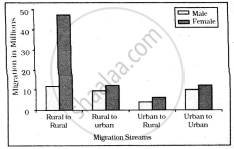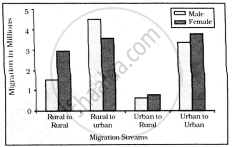Advertisements
Advertisements
प्रश्न
Write short note
Occupational structure of India
उत्तर
1. In 1901, most of the population of India was engaged in primary sector. 2. With the development of various industries over time, greater working population engaged in secondary and tertiary sectors.
3. However, India being an agrarian economy, most of the people are still engaged in primary sector.
4. In 2011, the occupational structure was as follows:
- 48.96% working population engaged in primary sector.
- 23.52% working population engaged in secondary sector.
- 27.52% working population engaged in tertiary sector.
APPEARS IN
संबंधित प्रश्न
Identify the correct co-relation :
A: Assertion; R: Reasoning
A: In the population pyramid, a broad base indicates a high number of children in a country.
R: Broad apex is an indicator of the high number of elderly in a country
A person who can write, read and do mathematical calculations in the country is known as ______.
Why do some states of India have higher rates of work participation than others?
Where does India rank in the world as regards area?
In which continent, low sex ratio is found?
Study the given graph carefully and answer the following question:

Intra-state Migration by place of Last Residence Indicating Migration Streams India, 2011

Inter-state Migration by Place of Last Residence Indicating Migration Streams India, 2011
Who dominates rural to rural migration in intra-state migration?
Consider the following statements and choose the ones which are correct.
- The world population on an average shows a sex ratio of 102 males per 100 females.
- According to UN, there are only 72 countries that have a favourable sex ratio for females.
- The sex ratio is lowest in Qatar.
What does the high proportion of young population implies?
Assertion: India is agrarian country.
Reason: Population engaged in agriculture is high in India.
Which one of the following is the largest linguistic group of India?
